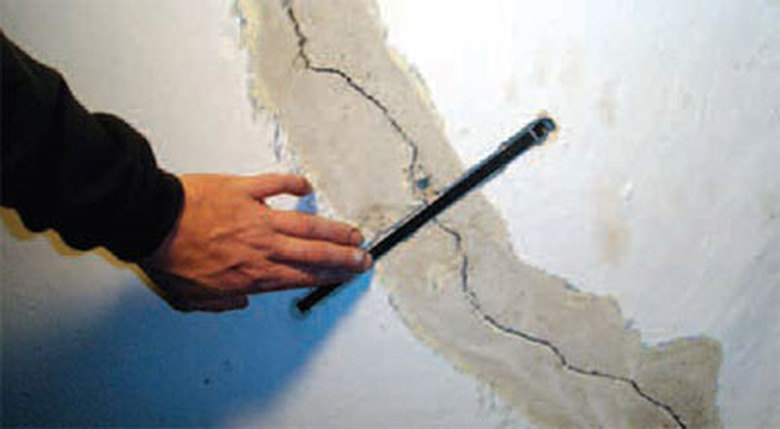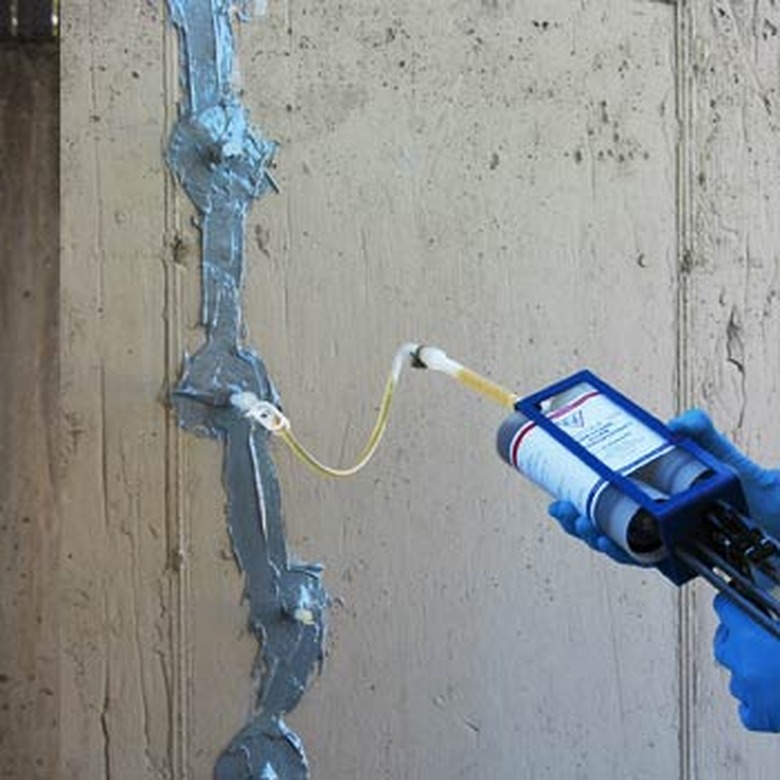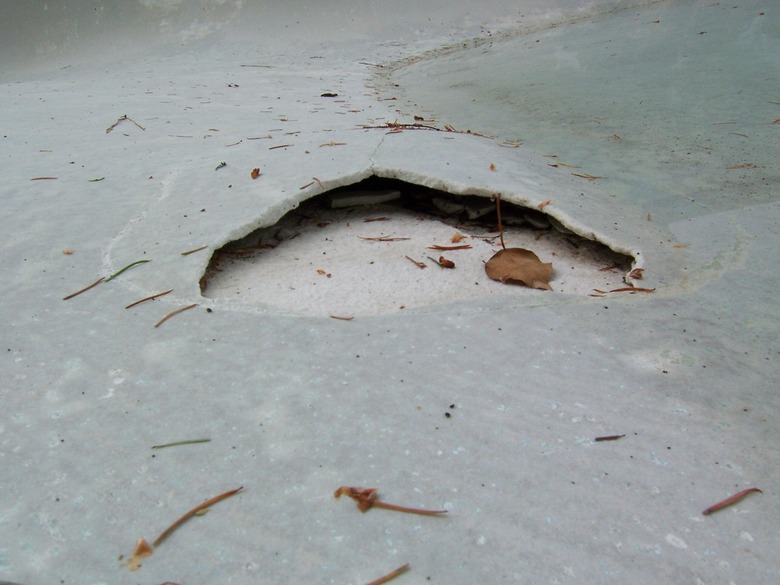Maintenance Tips For Concrete Pools
It's inevitable that over time, a pool's surface needs repair. Cracks, delamination, algae or rust stains, and calcium deposits can all affect the appearance and functionality of a pool.
Crack Repairs
Cracks on the surface of the pool can be caused by ground movement, erosion, lack of moisture in the soil, or even tree roots. Cracks should be repaired promptly to avoid larger issues such as delamination and pool water leakage. For best results use titanium or Kevlar staples to bridge the crack, then inject the crack with urethane foam.
This repair is often done by professionals, but it is possible to do it yourself if you have the right tools and supplies. Here's how it is done:
- Assess the crack and identify the ideal locations to install the staples (no more than 20 inches apart). Trace a line around each staple in the locations chosen.
- Wearing goggles, respirator, and ear protection, use a grinder with masonry blade to cut through the plaster along each outline.
- Drill a 1.5-inch deep hole on both ends of the outline, using a drill bit as wide as the staple.
- Chisel out remaining plaster to ensure that staple will sit below the surface of the pool. Wearing gloves, fill holes and chiseled-out area with epoxy. Press staple into epoxy. Apply epoxy over staple and smooth off excess. Allow the epoxy to dry.
- Using two-part epoxy, place ports along the cleaned-out crack. Cover the entire length of the crack, along with the base of each port, with two-part epoxy. Allow the two-part epoxy to dry.
- Once the epoxy is set up, force water through each port, watching for water leakage along the crack. If leaks become apparent, apply two-part epoxy over leaks, allow the epoxy to dry, then recheck.
- Inject urethane foam into each port until you see foam coming out the next port or the pressure is too great on the gun. Allow urethane foam to set up.
- Wearing personal safety equipment, break off the ports and sand down the epoxy with 36-grit sandpaper.
- Plaster and paint the surface to match the surrounding area.
Delaminated Plaster
Delamination happens when the underlying cement and the surface plaster become separated, creating a "void." Left untreated, these points of delamination can undermine the integrity of the pool's structure. This is a relatively easy repair that you can make yourself when the pool is drained.
- Inspect pool surface for any obvious irregularities, such as chipped or heaving plaster. Then, tap the surface of the pool with a pole or broom handle. Areas where the plaster has delaminated will sound distinctly different from areas where the plaster is firmly adhering. Such areas may also be "soft" due to water being in the voids. Draw a line around the edges of delaminated areas.
- Wearing goggles, respirator, and ear protection, use a grinder with plaster-cutting blade or chisel to remove chunks of plaster that have delaminated from the concrete.
- Use a shop vacuum or air compressor to remove all debris. Then, acid-wash the areas and rinse with water. Remove excess water and allow the areas to dry.
- Use approved pool concrete patch to fill the voids. Use a concrete hand trowel to level the surface and work it into a smooth finish. Sand the area smooth. Apply fresh plaster to the area, attempting to match the pool surface texture. Allow the plaster to cure, then refill the pool and balance the chemical composition.
Algae Stains
Different than algae growth—which can be controlled or eliminated by regular brushing and proper pool chemical balance—algae stains can be a blight on the appearance of your pool. Algae stains can be removed by using a stainless-steel pool brush and some elbow grease. Particularly tough algae stains, such as black algae stains, will require you to drain the pool and acid wash the surfaces. Typically, a pool needs to be drained and acid washed every five years, depending on pool conditions.
Rust Stains
Rust stains can be caused by a metallic object dropped into the pool to rust, leaving a stain on the pool surface. Typical items that may get kicked into a pool by accident are nails, screws, and toys not intended for the pool. Brushing with a stainless-steel pool brush or a pool pumice stone can remove some light rust stains.
Other rust stains may come from the iron rebar that is embedded in the pool concrete. The stains will migrate up from the rebar to the surface. These stains are usually dark and round but may also have various shapes. If they cannot be removed by brushing or using a pool pumice stone, the only way the stains can be removed is to drain the pool, and cut out the stained section, and patch the void with concrete injection material. This is almost always a job for professionals
Water with a high iron content can leave broad, unsightly stains. Commercial pool rust removal chemicals can be added to pool water, or you can drain the pool and apply the chemical directly to the rust stain. Consult the manufacturer's instructions and use personal protective equipment when using any stain removal chemicals.
Calcium Deposits
Calcium deposits can look like tiny stalagmites growing from the side surfaces of your pool, or can look like bird droppings of various sizes, usually dark or black in color on bottom surfaces. There are varying theories on why a pool will start to exhibit calcium deposits; most experts seem to think it is a combination of poor pool water chemistry and perhaps the plaster/concrete surface not being compacted and smoothed well enough to prevent chemicals from entering voids and reacting.
In any case, the smaller deposits can be rubbed away with a pool pumice stone. With larger deposits, you'll need to drain the pool, then remove the deposits by acid washing or grinding them down with a small sander. Use caution when using any power tools, as you must make sure that you do not grind off too much material. Always wear goggles, respirator, and ear protection when sanding a concrete pool.



